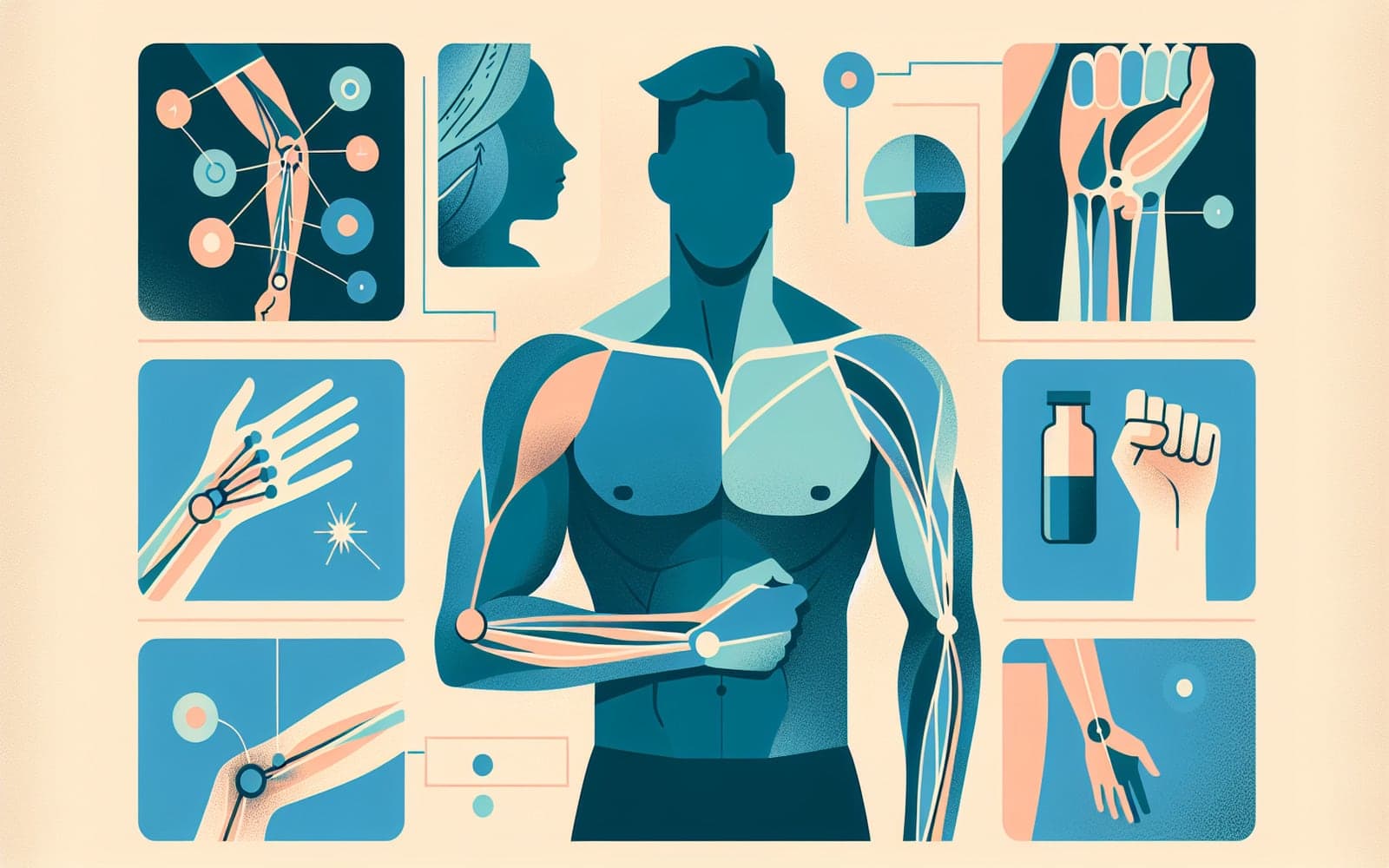Contents
-
The Pain Puzzle: Location and Timing
-
Beyond Pain: Other Physical Signs
-
Functional Changes: Strength and Movement
Decoding the Signs: Symptoms of Biceps Tendon Injuries
Decoding the Signs: Symptoms of Biceps Tendon Injuries
Listen to Your Body
Your body often sends signals when something's not right, and biceps tendon injuries are no exception. Recognizing these symptoms early can lead to faster diagnosis and more effective treatment. Let's explore the key signs that might indicate a biceps tendon problem.
Contents
-
The Pain Puzzle: Location and Timing
-
Beyond Pain: Other Physical Signs
-
Functional Changes: Strength and Movement
The Pain Puzzle: Location and Timing
Pain is often the first sign of a biceps tendon injury, but its characteristics can vary. Typically, you'll feel pain in the front of the shoulder, which may extend down the upper arm. This pain often worsens with activities like lifting or reaching overhead. Some people experience a dull ache that becomes sharper with certain movements. Night pain is also common, potentially disrupting sleep.
Beyond Pain: Other Physical Signs
While pain is a primary symptom, other physical signs can indicate a biceps tendon injury. You might notice swelling in the upper arm or shoulder area. In cases of a complete tendon tear, you may see or feel a bulge in the upper arm - often called a 'Popeye' deformity. Some people report a clicking or catching sensation in the shoulder, especially with certain movements.
Functional Changes: Strength and Movement
Biceps tendon injuries can affect how your arm functions. You might notice weakness, particularly when trying to bend your elbow or rotate your forearm (like turning a doorknob). In some cases, the range of motion in your shoulder might be affected. These changes can make everyday activities, like lifting objects or reaching for items on high shelves, more challenging.
FAQs
Can biceps tendon injuries cause sudden, sharp pain?
Yes, especially in cases of acute tears or ruptures.
Do symptoms always appear immediately after injury?
Not always; some injuries develop gradually with symptoms worsening over time.
Can I have a biceps tendon injury without pain?
It's rare, but some people may experience weakness or deformity without significant pain.
Are biceps tendon symptoms different from rotator cuff symptoms?
They can be similar, which is why professional diagnosis is important.
Can biceps tendon symptoms come and go?
Yes, especially in early stages or with less severe injuries.
Connecting the Dots
While these symptoms can indicate a biceps tendon injury, they may also be signs of other shoulder problems, making professional evaluation crucial for accurate diagnosis.
Additional References
-
Nho SJ, Strauss EJ, Lenart BA, et al. Long head of the biceps tendinopathy: diagnosis and management. J Am Acad Orthop Surg 2010; 18:645.
-
McDonald LS, Dewing CB, Shupe PG, Provencher MT. Disorders of the proximal and distal aspects of the biceps muscle. J Bone Joint Surg Am 2013; 95:1235.
-
Virk MS, Cole BJ. Proximal Biceps Tendon and Rotator Cuff Tears. Clin Sports Med 2016; 35:153.
This article has been reviewed for accuracy by one of the licensed medical doctors working for Doctronic.












